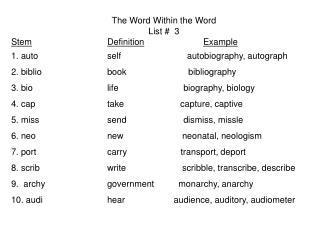
This inconsistency in STEM operational definitions was revealed through a content analysis of peer-reviewed journal articles in the ERIC education database. Unfortunately, however, these characteristics are elusive in existing quantitative STEM education research, including research on gender and STEM. To make valid claims about ways institutions of higher education can support women in their studies throughout their trajectory to STEM degree completion and beyond (e.g., Gayles and Ampaw 2014), consistent and transparent definitions of STEM are critical in research on college students. 2013) which has not yet led to an agreed-upon classification of STEM fields (Zhang 2011), but the issue is not often articulated or understood.

Scholars have noted that the designation of STEM areas is an evolving issue (Ackerman et al. However, to be able to understand the effectiveness of efforts to improve STEM outcomes for women, scholars must first reliably be able to understand what is meant by STEM.

2014), predictors of a STEM major such as academic preparation and/or STEM attitudes (Riegle-Crumb and King 2010), and the climate and sense of belonging of women in STEM (Johnson 2012 Rincón and George-Jackson 2016), among many others. Past studies with a focus on women in STEM have examined women’s STEM-major choice (Davison et al. Diminished STEM access or degree completion for these groups limits opportunities for well-paying, high-status jobs, likely maintaining or exacerbating social inequality, particularly given restrictive access, demanding expectations, and opportunities for such jobs upon degree completion.

Given wide recognition of the importance of science, technology, engineering, and mathematics (STEM) education and the need to support students through STEM degree pathways that will fill national workforce needs (National Science Board 2015), equity concerns for underrepresented groups, such as people of color, individuals with disabilities, and particularly women, represent an issue of ongoing importance (National Science Foundation, National Center for Science and Engineering Statistics 2015). We recommend researchers and practitioners developing research-based practices: 1) interpret research findings understanding potential inconsistency from different STEM operationalizations, 2) explicitly describe STEM operational definitions to enable comparing findings, 3) routinely analyze sensitivity to alternate STEM definitions, and 4) find common STEM categorizations that retain legitimate variation while providing a basis for consistent comparison. We argue the field should strive to find common categorizations of STEM that retain the legitimate variation in how STEM can and should be defined, while providing a basis for consistent comparison. This result highlights that the definition of STEM matters, and inconsistent operationalization in the literature presents an interpretation challenge. While our findings follow expectations about social science fields and gender, it is noteworthy that results regarding STEM degree completion by gender for science and engineering-related fields were opposite those of high paradigm STEM fields.


 0 kommentar(er)
0 kommentar(er)
